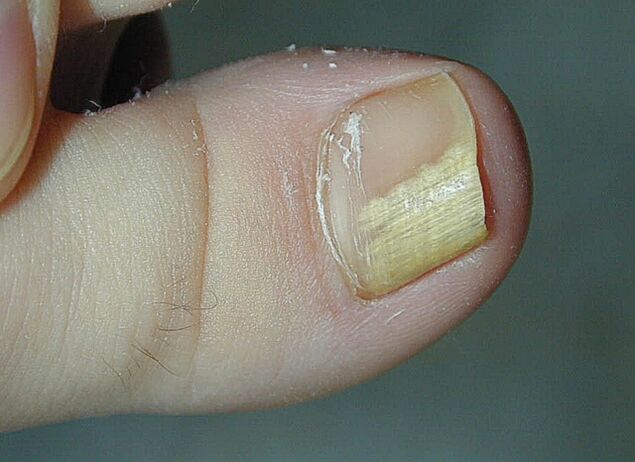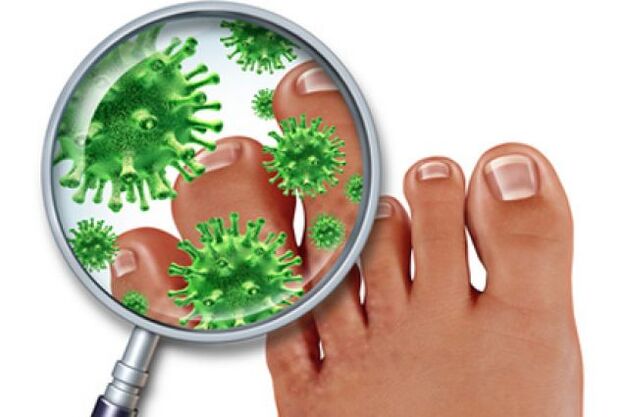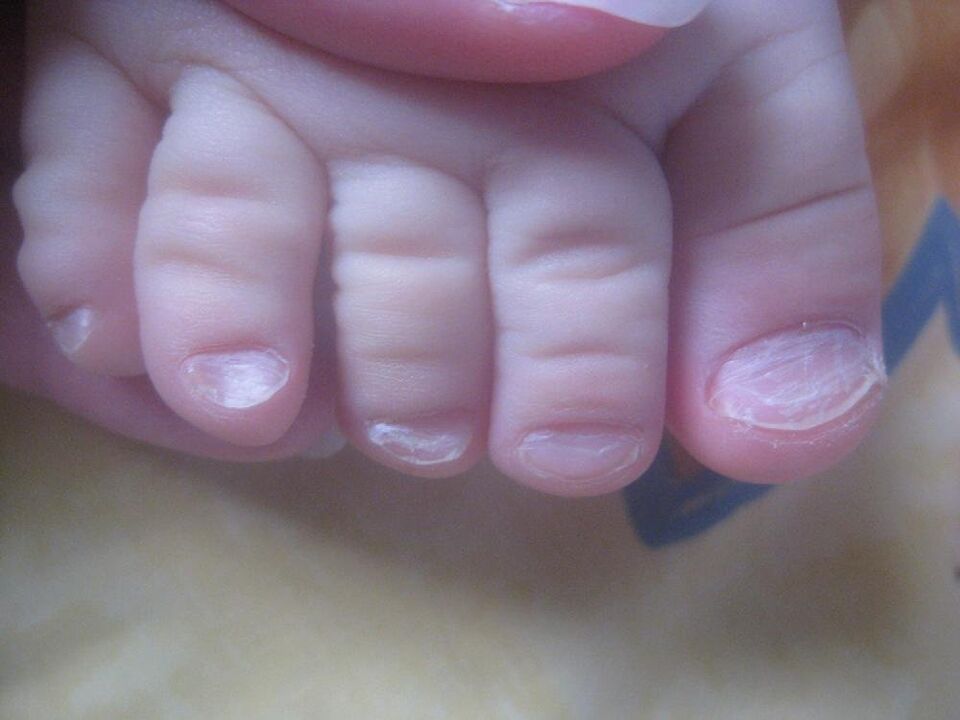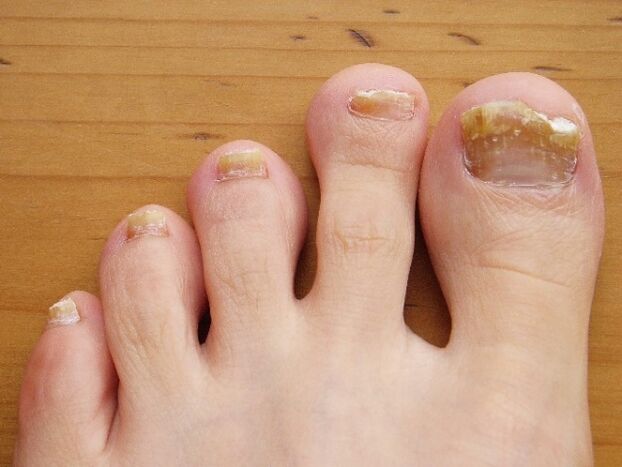Nail fungus or fungal disease of the nails and tissues of the hands and feet is a common infectious disease. It is caused by yeast fungi that destroy nail plates and cause skin inflammation. In medicine, these diseases are called onychomycosis or paronychia. The standard misconception is the claim that only people who do not keep their hands and feet clean can get sick with the fungus. Most often, nail fungus affects those who due to profession or other circumstances have to stay in shoes for a long time.
Symptoms
The classification of the disease depends on the type of infection and the localization of its spread.
- Normotrophic onychomycosis is manifested by small changes in the structure of the nail plate in the form of spots and yellow lines along the nail. It is less noticeable and often does not cause any discomfort. The main concern is the appearance of the nail, which in the initial stages people try to hide with the help of cosmetics.
- Hypertrophic onychomycosis causes an increase in the volume of the horny plate of the nail. With this disease, a person may experience pain when pressing a finger. This creates inconvenience when walking with shoes.
- White superficial fungi are distinguished by the roughness on the surface of the nail plates and the unpleasant white spots.

A mycologist specializing in fungal diseases can determine the cause of the disease and prescribe appropriate treatment.
Types of mushrooms
The symptoms of infection with a fungal infection are similar, but the doctor chooses treatment depending on the type of fungus that caused the disease.
- Dermatophyte is the most common fungus that causes violations of the surrounding nail plates and tissues. Usually selects the thumb, little finger and skin between the toes. It is easily cured with early diagnosis
- Candida begins its action on the skin between the fingers and moves to the nails.
- Fusarium fungus and Alternaria are rare and are found mainly in people with compromised immunity
Reasons for submission
The main cause of infection is violation of sanitary standards. But even a person who carefully monitors the cleanliness of hands, feet and things can become infected in common areas.
- Contact the mushroom carrier and his things. This could be a visit to a spa or sauna, the use of foreign individual accessories or poorly processed manicure items.
- Excessive sweating of the feet creates a favorable environment for the spread of mold.
- The use of tight and poorly ventilated shoes from artificial materials contributes to the creation of high humidity, helps in the development of the disease.
- A weakened immune system is unable to fight infection.
- Antibiotic treatment leads to a weakening of the immune system and the decomposition of the body's own microflora.
- A long period of taking antibacterial agents that destroy beneficial bacteria along with those that cause disease
- Vascular diseases of the extremities reduce resistance and allow the fungus to disrupt the integrity of the skin for the development of the disease.
- Manifestations of diabetes mellitus in the form of skin disorders are a good environment for the development of fungal colonies.
- Wounds on the skin and cracks on the nails help the fungus to calm down and start their work.
- Visits to nail salons can provoke the appearance of fungal infections if the sanitary standard for tool processing is not observed.

In children
In childhood, fungal infections are less common. This is due to the characteristics of the organism. As you know, children's feet are not subject to excessive sweating. However, going to swimming pools and gyms can lead to infection in children. Weakened immunity from cold also contributes to this. In adulthood and adolescence, when rapid hormonal changes occur in a child's body, there is also a risk of contracting a fungal infection. To protect against infection, it is necessary to monitor the cleanliness of shoes and wash them in time with antiseptic composition.

One of the causes of fungal infection in children may be a lack of vitamins in the body. It is desirable to fill the gap with the help of proper nutrition and complex vitamin therapy. Consulting a doctor will help you choose the quality composition of vitamin supplements for your baby.
Development process
Favorable conditions are necessary for the development of a fungal infection. Sweat-soaked shoes and a neutral or slightly acidic environment create comfort for fungal reproduction.
Unpleasant appearance of the nails, itching and pain around the nail indicate an initial infection. If you do not engage in treatment, then after a while the fungus will completely destroy the nail plate and reach the soft tissues of the toes and feet. In the advanced stage of disease development, there may be qualitative changes in the form of blisters filled with a turbid fluid with a strong unpleasant odor.
Complications
A disease that is common on the outer surface of the nail plate may not cause discomfort. In some cases, this condition can last for years. The fungus carrier does not suffer on its own, but is able to transmit the infection to others.
The consequences of fungal infection mainly affect the nails and the tissues around them, but in the future they can cause negative consequences for the health of the whole body.
The growth of fungal colonies causes pain in the foot and leads to difficulty in wearing shoes. Nails change shape and can grow into the tissues of the toes, causing unbearable pain while walking.

Deterioration of the immune system, caused by toxins released by the fungus during its lifetime, leads to the frequent occurrence of colds and inflammatory processes in the body.
Allergic reactions caused by the working products of fungi lead to a variety of side diseases of the respiratory system and liver and kidney diseases.
An infection that is located in the body can cause conjunctivitis, rhinitis of various etiologies. Itching on the skin, red spots and irritation can affect not only the sites of initial localization of fungal colonies, but also go to the skin of the body and scalp. It also affects the condition of the hair and skin on the face. May be part of the cause of dandruff.
Persistent itching and discomfort caused by the disease is a fairly common reason to visit a neurologist and psychotherapist.
The advanced form of the disease can lead to nail loss and deformity of bones and joints.
prevention
To avoid infection, it is necessary to carefully observe the standards of hygiene not only when visiting public places, but also personal ones.

It's banned:
- Use ordinary hygiene items. Every family member should have their own nail clippers, foot towel, soap and more.
- You can not use someone else's shoes. Through common household slippers, the infection can be easily spread.
- Wash the sick person's things with everyone else. It should be remembered that not all detergents and detergents are able to destroy the fungus. This infection is very strong. The clothes of a sick person should be treated with special solutions. This is especially true for shoes. It should be rinsed well from the inside and the beds should be changed often.

























